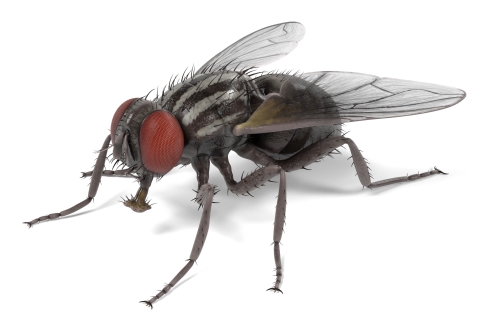Health Threats Posed By Flies
Flies are a real nuisance. The moment the weather starts to warm up they come out in force.
Despite being tiny, they often make people shudder, this might be because of the way they look, but it’s a valid reaction.
The Average Fly
The house fly is the most common visitor, it can be up to ¼ inch long and has four distinctive stripes on its thorax. While they are the most common type of fly in your home, they are not the only one.
Larger flies will have stocky bodies, short legs and prefer the taste of manure or food waste. In contrast, the smaller flies will have longer legs, slimmer bodies and be attracted to decaying plant matter.
Unfortunately, you’re likely to have something in your home that invites both types of fly. This is an issue as flies has the potential to transmit a huge array of diseases.
How Diseases are Transmitted
You may be surprised to discover flies don’t actually have teeth. Whenever they land, their sensors detect whether the substance they’re on is edible or not.
These sensors are in their feet. If the answer is yes, the fly will effectively throw-up some of the acids from its stomach onto the food.
This acid dissolves the food, allowing the fly to suck it into its stomach. Flies land on many different surfaces, from animal waste, right through to your food or kitchen countertops.
Flies also pick up bacteria when they suck up their liquid food, allowing bacteria to spread in two more ways:
-
In the Acid
The process of spitting up acid allows bacteria that were consumed previously to go back onto the food, or countertop, where you are preparing food that you eat.
-
Waste
Because they have no teeth, flies exist on a liquid diet. This means they are constantly producing waste, every time they land.
In short, they are just putting acid on your food, they are also putting their waste products, which could be full of bacteria.
The Diseases
There are over 60 diseases which are known to be carried by flies, the most common ones are:
- Dysentery
- Typhoid fever
- Anthrax
- Chlorea
- Tuberculosis
- Leprosy
Controlling Flies
Now you know why it is essential to keep flies out of your home, off your countertops and away from your food.
The first step is to get an electronic pest control unit; this is much more effective than trying to swat all the flies yourself.
You should also put up fly curtains at each of your entrances, and make sure all your countertops are wiped down regularly. Food shouldn’t be left lying around and all waste should go into a bin with a lid.
The less appealing your home is to flies, the lower your chances of getting a disease from them.
Even though cleaning your home may not be the most enjoyable thing, it’s still important to do. After all, a clean home can help you reduce the spread of harmful bacteria and pests that can be the culprit of illness.
And while you may have already found all the cleaning hacks on Instagram and used all the tips and tricks on Pinterest. Chances are there are still parts of your home that are being overlooked.
Here are seven areas of your home you probably forget to clean, but absolutely shouldn’t.






